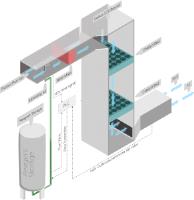 Add My Company
Add My Company
Sign In
The Requirement for SCR & SNCR
05-08-2019

For decades coal has been the fuel of choice for most power stations around the world but also happens to be the most pollutant. The environmental regulation in Europe, China and India has stringent emission limits which coal fired power stations are finding it increasingly difficult and expensive to comply with and are therefore employing such systems as SCR and SNCR.
Selective catalytic reduction (SCR) systems are typically found on small and large boilers, gas turbines, diesel engines and even automobiles and have shown to reduce NOx by 70-95%. NOx is one of the primary pollutants generated in a fossil fuel combustion process. Their presence in the atmosphere has a negative impact on the environment (smog, acid, rain, reduced visibility) and human health (respiratory problems) therefore this very same NOx reducing technology is applied to power stations all around the world.
How it works
In the combustion process nitrogen reacts with oxygen in high temperature conditions to produce nitrogen oxides (NOx). Total NOx production is the sum of nitrogen monoxide NO and nitrogen dioxide NO₂. Emission limits for NOx require plants to run DeNOx process in order to reduce the NOx emission below allowable limits.
The nitrogen oxides concentration in the flue gas, can be effectively reduced by reacting them with ammonia water, or urea in high temperature. Ammonia/urea reacts with both nitrogen monoxide NO and nitrogen dioxide NO₂, to produce nitrogen N₂, water vapor H₂O and Carbon Dioxide CO₂ when urea is used.
SCR DeNOx installations are common for large coal fired power stations, SNCR technology can often be found in small to mid-size incineration plants and power stations utilising CFB boilers.
For more information on The Requirement for SCR & SNCR talk to Codel International Ltd
Enquire Now
More News
List your company on FindTheNeedle.

